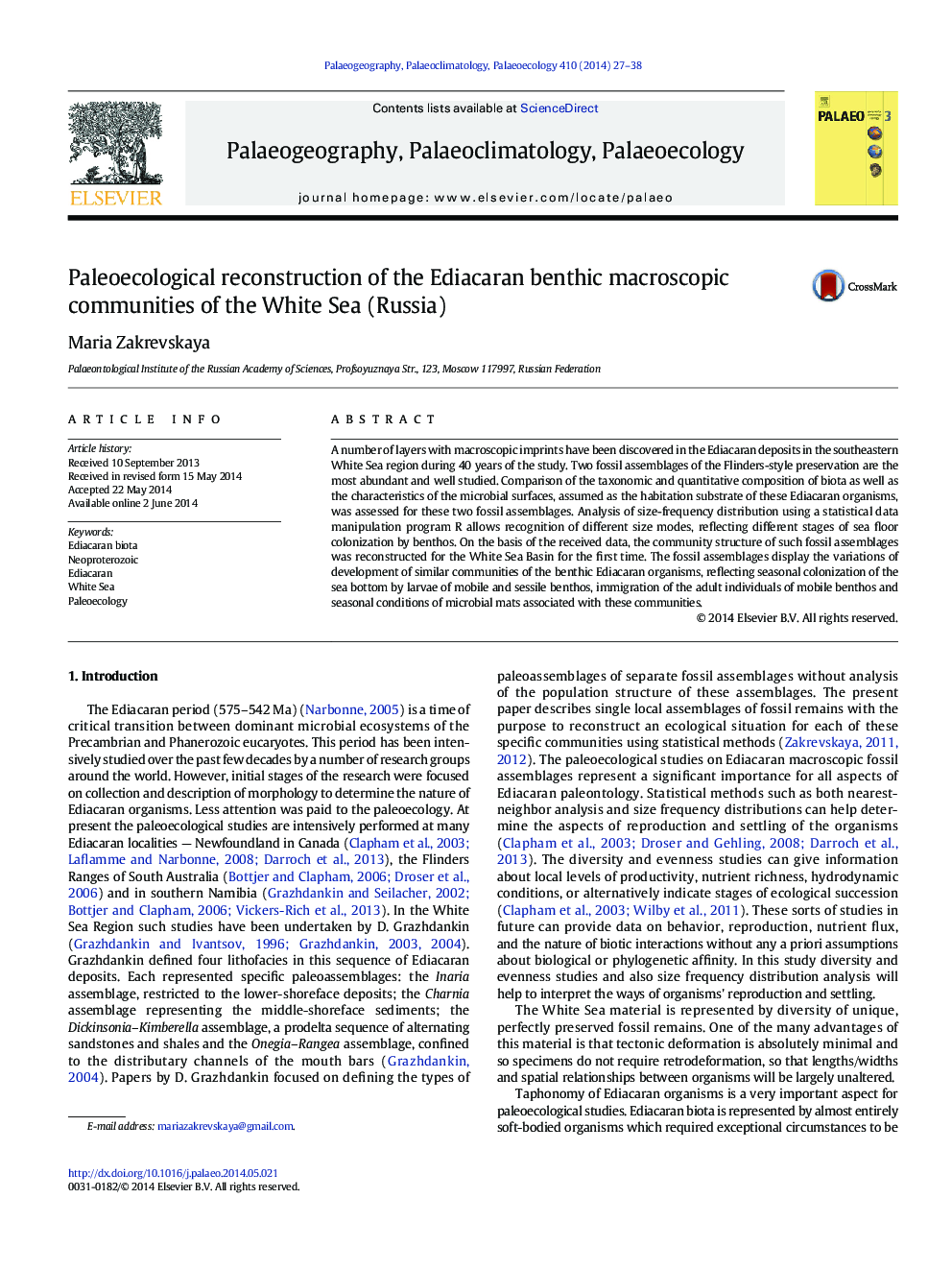| Article ID | Journal | Published Year | Pages | File Type |
|---|---|---|---|---|
| 4466107 | Palaeogeography, Palaeoclimatology, Palaeoecology | 2014 | 12 Pages |
•Fossils' size modes were defined on basis of BIC analysis of their measurements.•Size modes reflect separate age classes in the population of benthic organisms.•Reconstructions of Ediacaran communities were created for White Sea Basin.•Hypothesis of communities' formation was suggested.•Important role of seasonal changing of associated microbial mats was defined.
A number of layers with macroscopic imprints have been discovered in the Ediacaran deposits in the southeastern White Sea region during 40 years of the study. Two fossil assemblages of the Flinders-style preservation are the most abundant and well studied. Comparison of the taxonomic and quantitative composition of biota as well as the characteristics of the microbial surfaces, assumed as the habitation substrate of these Ediacaran organisms, was assessed for these two fossil assemblages. Analysis of size-frequency distribution using a statistical data manipulation program R allows recognition of different size modes, reflecting different stages of sea floor colonization by benthos. On the basis of the received data, the community structure of such fossil assemblages was reconstructed for the White Sea Basin for the first time. The fossil assemblages display the variations of development of similar communities of the benthic Ediacaran organisms, reflecting seasonal colonization of the sea bottom by larvae of mobile and sessile benthos, immigration of the adult individuals of mobile benthos and seasonal conditions of microbial mats associated with these communities.
